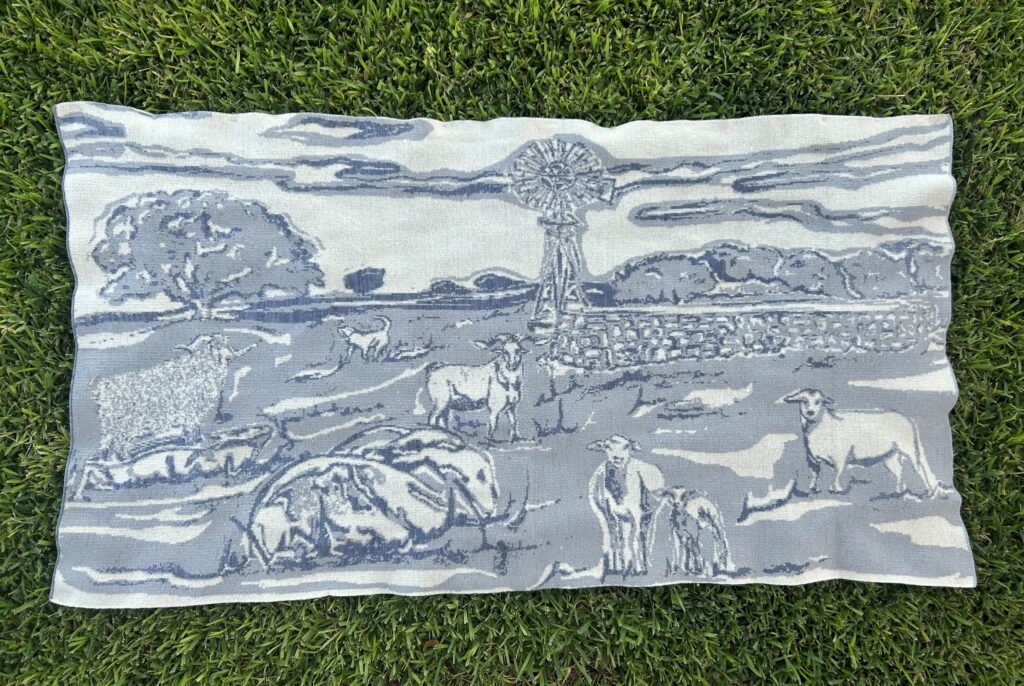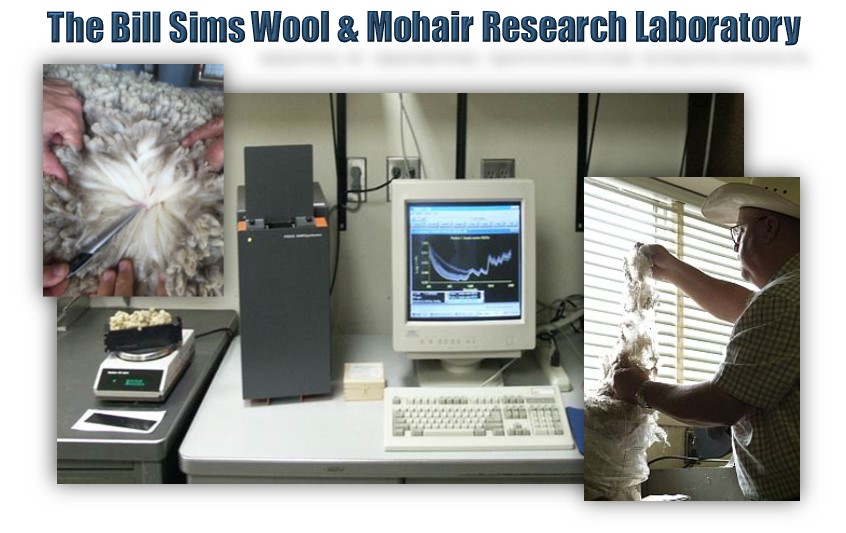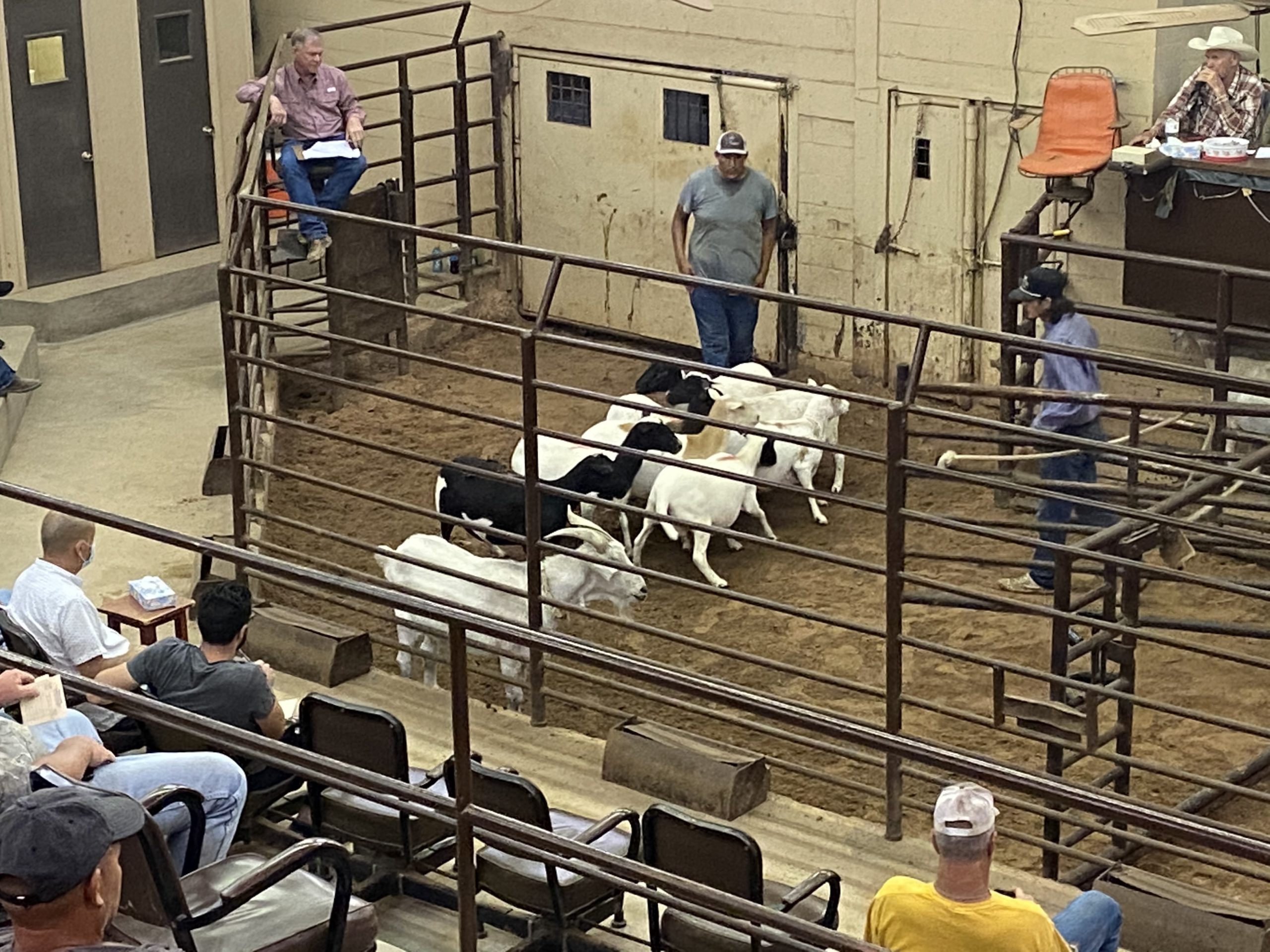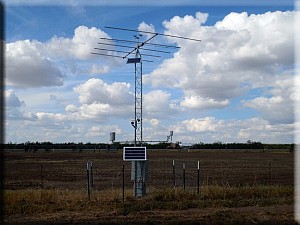West Central Texas
Billy E. Warrick, Associate Professor and Extension Agronomist (Retired)
The information provided in this publication is for educational purposes only. Reference to commercial products or trade names is made with the understanding that no discrimination or endorsement is intended by the Texas AgriLife Extension Service, Texas AgriLife Research or Texas A&M University.
Preparing cotton for harvest is not an exact science. Although there is much information on how and when to apply harvest aid chemicals, producers recognize that seasonal and crop conditions have effects on crop responses to harvest aid treatments that are not always predictable.
Often, it is advisable to delay the choice of harvest-aid treatment(s) until the crop is nearly ready to terminate. While the variety, soil type, and cultural inputs for a given cotton crop can be selected, the weather cannot. The final decision as to when and what to apply is made by the prudent producer near the time of the initial harvest-aid treatment.
The cotton harvest aid recommendations listed in Table 1 are based largely on grower experiences and the results of field trials conducted in West Central Texas in 1992-2001. In some instances, other treatments were as effective as those listed in preparing cotton for stripper or picker harvest. The treatments listed were selected on the basis of cost and overall performance (primarily defoliation, regrowth suppression, and for stripper harvest, desiccation) in numerous tests.
A more complete listing of the cotton harvest aid chemicals labeled for use in Texas is provided in Table 2. Always consult product labels to review safety and use recommendations.
In some instances, it may be practical to mechanically stripper harvest cotton following the application of only a defoliant (no desiccant). Cotton should have a minimum of 80% of the leaves removed and most of the remaining leaves desiccated with little or no regrowth before harvest begins. To avoid heating in modules and trailers, the moisture content of the harvested cotton needs to be 12% or less.
Good spray coverage is essential as harvest aids are not readily translocated within the plant. Each leaf that is to be removed or desiccated must receive some of the spray. From tests conducted on nozzle types and arrangements, the most consistant and satisfactory results were obtained using a flat fan nozzle over the top of the row combined with one hollow cone nozzle, on an eight inch drop, on each side of the row. Nozzle types, spray pressure and ground speed should be matched to apply a spray volume that is in accordance with product label specifications.
Do not treat more acreage than can be harvested in a reasonable length of time. Anticipate rain delays, breakdowns and other unforeseen circumstances that can halt harvest operations. Remember that regrowth could begin to hamper stripper operations within two weeks after the first harvest-aid treatments are applied.
Table 1. Suggested cotton harvest aid treatments for 2002 in West Central Texas.
| Region | Treatment | Considerations* |
|---|---|---|
| West Central TexasIrrigated Production |
Def/Folex @ 1.5-2.0 pt/A |
Good defoliation, but limited regrowth control. |
| Ginstar @ 0.5-0.8 pt/A |
A formulation of Dropp + diuron. Provides good defoliation with some regrowth suppression. Apply only to mature cotton plants when the last boll you expect to harvest is mature. A boll is “mature” when it is too hard to be dented when squeezed between the thumb and fingers, difficult to slice with a sharp knife, or when seeds cut in cross sections have fully developed cotyledons, as indicated by the absence of jelly within the seed. | |
| Def/Folex + Prep @ 1.0 pt. + 1.0 pt/A |
Intended to accelerate boll opening and defoliate in one application. Most applicable in non-uniform fields or if earlier start on harvest is desired. Delay treatment until last harvestable bolls are mature or when they are only 4 to 5 nodes above the uppermost first position cracked/open boll. (Applied in 2 sequential applications with a minimum of 4 days between application.) | |
| Finish + Ginstar @ 1.5 pts/A + 3 ounces |
This tank-mix provides good defoliation with limited boll opening and limited regrowth control. Apply only to mature cotton plants when the last boll you expect to harvest is mature. | |
| Region | Treatment | Considerations* |
| West Central TexasDryland production |
Cyclone Max @ 21 oz/A |
For use on short-statured cotton with limited yield potential. Use with non-ionic surfactant. Delay treatment until cotton is 80+% open. |
| Cyclone Max + Quick Pick @ 5.25 oz/A + 1.5 pt/A | For use on short-statured cotton with limited yield potential. Provides some regrowth suppression. Use with non-ionic surfactant. Delay treatment until cotton is 80+% open. | |
| Ginstar @ 0.4-0.8 pt/A followed by Cyclone Max @ 21 oz/A | Ginstar is a combination of Dropp + diuron. Provides good defoliation and some regrowth suppression when applied at 0.55 to 0.8 pt/A. Apply Ginstar when cotton is 60-65% open and follow with desiccant 5 to 7 days later if necessary. | |
| Cyclone Max @ 5.25 oz/A followed by Cyclone Max @ 14 oz/A | Low rate of Cyclone Max provides only partial defoliation. Some “leaf sticking” will occur. Regrowth is frequently a problem following this treatment. Use non-ionic surfactant. Apply low rate of Cyclone Max when cotton is 75+% open. Best suited for northern Blackland area after nighttime temperatures begin to decline | |
| Roundup Ultra Max @ 13 to 20 oz/A followed by defoliant @ normal use rate followed by Cyclone Max @ 14 to 21 oz/A | Intended to provide extended regrowth control. Tank mix of Roundup + defoliant not as effective as sequential applications. Research has shown that Roundup applied at 12 to 19 oz/A when cotton is about 40% open provides good regrowth suppression with no loss in yield or quality. FIFRA Section 2 (ee) allows end users (growers) to make reduced rate application. Do not apply to fields where seed will be saved for replanting. Follow with defoliant at 60+% open bolls (usually about 1 week later) and with desiccant 5-10 days later. NOTE: Treatment will not eliminate regrowth that is present at time of treatment. Roundup will not suppress regrowth in Roundup Ready® cotton cultivars. |
Table 2. Cotton Harvest Aid Chemicals Registered For Use in Texas.
| Trade Name | Chemical Name | Suggested Rate Per Acre | Comments | |
|---|---|---|---|---|
| BOLL OPENERS/CONDITIONERS | ||||
| Prep 6EC (55.4% a.i.)*Super Boll (55.4% a.i.)Ethephon 6 (55.4% a.i.) Boll’d |
Ethephon | Boll openingConditioningBoll opening 1.33 pt (above 80o F.) 1.33 pt to 2.66 pt |
For opening bolls, apply when sufficient numbers of unopen bolls are mature to produce the desired yield.To prepare crop for defoliation (conditioning), treat with ethephon 4 days or more before full defoliation treatment.Some shedding of small immature bolls and squares may be associated with treatment.Do not apply ethephon if rain is expected within 6 hours of application.
Weather and growing conditions may affect the boll opening rate and defoliation activity of ethephon treatment. No livestock grazing or feeding restrictions when used alone. Do not apply within 7-days of harvest. Do not tank mix with desiccants if cotton is to be spindle harvested. Do not tank mix with defoliants containing sodium chlorate because this will result in the formation of hypochlorous acids, which upon heating emit toxic chlorine fumes. Do not plant another crop within 30 days after treatment. See label 1, 2, 3 and msds 1, 2, 3 for additional details |
|
| BOLL OPENERS/DEFOLIANTS | ||||
| Finish (32.1% a.i. + 4.3% a.i.)* |
Ethephon + Cyclanilide |
1.0 -2.0 qt | Accelerates opening of mature bolls, defoliates leaves and provides some inhibition of terminal regrowthTank mix of Finish (1.0-1.5 qt/A) plus a defoliant suggested for use in Southwest.Apply when sufficient number of unopen bolls are mature to produce desired yield.Small grains planted less than 1 month after treatment or interseeded into cotton crop may not be harvested for food or feed.
Do not apply Finish if rain is expected within 6 hours of application. See label and msds for specific precautions. |
|
| CottonQuik (18.3% a.i. + 58.6% a.i.) |
Ethephon + AMADS |
1.5-3.5 qt | Provides defoliation, increases boll opening and offers limited regrowth control.Tank mix of CottonQuik plus a defoliant suggested for use in Southwest.May be tank mixed with other defoliants for enhanced defoliation and regrowth control.Uniform spray coverage is essential; spray must contact all cotton leaves and unopen bolls.
See label and msds for specific precautions. |
|
| Trade Name | Chemical Name | Suggested Rate Per Acre | Comments | |
| DEFOLIANTS | ||||
| Aim (22.3% a.i.)* |
Carfentrazone-ethyl | 1.0 to 1.6 ounce | Aim herbicide may be used as a harvest aid to defoliate and desiccate cotton. It should be used in a tank mixture with other cotton harvest aids. Aim may be tank mixed with Dropp, Def, Finish, Prep, Folex, Harvade, Ginstar, CottonQuik, or other registered cotton defoliation products.Make application when 60 to 70 percent of the bolls are open.Do not apply within 7 days of harvest.Do not apply when conditions favoring drift exist or wind is above 10 mph
Use a minimum of 10 gallons of finished spray per acre for ground application and 5 gallons per acre for aerial application. Coverage is essential for defoliation. Use a crop oil concentrate at 1% v/v (1 gallon per 100 gallons of spray solution). Repeat application if necessary to remove remaining foliage or control regrowth. Do not apply more than 2.0 ounces per acre total as a harvest aid. Dense cotton canopy, large plant size, and environmental conditions not conducive to product absorption or activity will reduce initial application efficacy and increase the need for a second application. Crop rotation for application in cotton: Following treatment of cotton with Aim the field may only be rotated to a registered crop. For registered crops – no waiting period; root and leafy vegetables–30 days; all other crops–12 months. See label and msds for specific precautions. |
|
| Harvade 5-F (48% a.i.)* |
Dimethipin | 6 to 8 fl oz | For first application, use 8 fl. oz per acre plus 1.0 pt/A crop oil concentrate when cotton is mature (i.e. 70+% open bolls).If a second application is required, use 6 fl. oz plus adjuvant applied 5-7 days later.A second application may be required in rank cotton or if night temperatures fall below 60oF for 3-4 days or if rainfall occurs within 6 hours after treatment.Tank mix combinations with PREP, CYCLONE MAX and DROPP are recommended for some situations; check label for details.
Do not permit sprays containing HARVADE to drift to citrus, broccoli, almonds, grapes, peppers, tomatoes, lettuce, alfalfa, sugar beets or winter wheats. See label and msds for additional details |
|
| Marketed under several trade names (28-47% a.i.)* |
Sodium chlorates | ½ to 1½ gal (3-4.5 lbs) |
Refer to label and material safety data sheet before handling.Use product with adequate fire retardant.To avoid fire or explosion, check the label before mixing with insecticides.Clean spray equipment before and after use and do not allow wash water to contact plants.
Keep contaminated clothing wet until washed. Do not apply later than 7 days before harvest. Do not graze treated areas or feed gin waste to livestock. |
|
| Def-6 (70.5% a.i.)* |
Tribufos | 1.3 to 2.5 pt | Def-6 may be applied to mature cotton when 60 percent or more of the bolls are open.Four to 7 days required for satisfactory leaf drop under favorable conditions.Under adverse conditions 9-14 days may be required for leaf drop.Apply specified rates per acre in recommended gallons of water to give thorough coverage.
Adjuvants, including vegetable or petroleum based oils, non-ionic surfactants and diesel oil may be used to improve coverage; use white diesel oil when night temperatures drop below 60 F or if cotton plant is moisture-stressed. Higher rates may be necessary in rank cotton. Certain phosphate insecticides are compatible with DEF or FOLEX for late season boll weevil control; check product labels to insure compatibility. Do not graze treated areas. May be applied up to the first frost, but not within 7 days of picking. See label and msds for additional details |
|
| Folex 6 E.C. (70.5% a.i.)* |
Tribufos | 1.0 to 2.5 pt | See above comments for Def-6.Avoid spray drift to other crops.Folex 6EC and Def-6 are toxic to fish; keep out of lakes, ponds and streams.Follow the label directions for mixing with other harvest aids.
Do not graze treated areas. See label and msds for additional details |
|
| Dropp 50WP (50% a.i.)* |
Thidiazuron | 0.2-0.4 lb | Apply Dropp when 60% or more of the bolls are open and remaining bolls to be harvested are mature.Use of Dropp is not recommended when night temperatures are expected to fall below 600F.Use of Dropp on drought-stressed cotton may result in less than satisfactory defoliation.Rainfall up to 24 hr after application may reduce the effectiveness of Dropp.
Adjuvants (crop oils or penetrating oils) added to Dropp can improve performances under adverse conditions. Tank mixes of Dropp and Def 6 or Folex 6 E.C. improve defoliation in some areas. Tank mixes of Dropp + Prep may improve defoliation and aid in opening mature bolls. Do not feed foliage from treated cotton plants or gin trash to livestock. Do not allow spray to drift onto trees or other non-target areas. DO NOT ALLOW THE SPRAY SOLUTION TO DRY IN THE APPLICATION EQUIPMENT; IMMEDIATELY FOLLOWING APPLICATION, CLEAN ALL SPRAY EQUIPMENT THOROUGHLY WITH DETERGENT AND WATER. A TANK CLEANER LABELED “CLEANER CONCENTRATE” IS EFFECTIVE IN REMOVING DROPP RESIDUES. See label and msds for additional details |
|
| Ginstar (12.0% a.i. + 6.0% a.i.)* |
Thidiazuron + Diuron |
0.4-1.0 pt | Apply Ginstar when all harvestable bolls are mature, but at least 5-days before harvest.May be applied with air (2-10 GPA) or ground (10-25 GPA) spray equipment.Do not allow spray drift to contact trees or crops other than cotton.Use of low nozzle pressure (20-30 psi) is recommended for ground equipment.
Do not feed foliage from treated cotton plants or gin trash to livestock. Two month plant back restrictions apply to small grains, most row crop and some vegetables; 4-month restriction on planting back to onions. See label and msds for additional details |
|
| Trade Name | Chemical Name | Suggested Rate Per Acre | Comments | |
| DESICCANTS | ||||
| Cyclone Max (43.8% a.i.)* |
Paraquat | 1.0-2.0 pt | Apply when 80% or more bolls are open and remaining bolls to be harvested are mature.When foliage is dense, make two applications at the lowest recommended rates.Split applications of 2.66 to 5.25 oz followed by 16 to 18 oz provide some defoliation and improved canopy penetration.Do not make more than 2 applications or exceed a total of 2.0 pt/A per season.
Use a non-ionic surfactant at 1 qt/100 gal of spray mix (0.25% v/v). Do not apply within 3 days of harvest. Do not harvest within 7 days after application when used with phosphate or chlorate defoliant. Do not pasture livestock in treated fields or feed treated foliage. When combined with phosphate defoliants, observe livestock cautions on the phosphate product labels. Avoid getting in eyes or on clothing. This compound is extremely hazardous when ingested; avoid getting material in mouth, in food or drink containers. See label and msds for specific precautions. |
|
| Trade Name | Chemical Name | Suggested Rate Per Acre | Comments | |
| PRODUCTS FOR OTHER APPLICATIONS | ||||
| Accelerate (15.9% a.i.)* |
Endothall | 1 to 1.5 pt | Used in tank mix combinations with other labeled cotton harvest aids to hasten defoliation or desiccation.Follow companion product label directions regarding precautions, mixing and application instructions, plant foliage and residue grazing and feeding restrictions, etc.This product is toxic to fish and drift to other crops, trees, or plants may result in plant damage.See label and msds for specific precautions. | |
| Roundup Ultra Max (50.2% a.i.)* |
Glyphosate | 13 to 20 ounces (Regrowth suppression) 2.0-4.0 pt (Weed control and regrowth suppression) |
Provides extended regrowth inhibition, in conventional cotton varieties.Treat after 60% or more of bolls are open.Do not apply to cotton grown for seed.Allow a minimum of 7 days between application and harvest.
Do not graze treated cotton fields or feed cotton foliage to livestock. Less effective under drouth stressed conditions or when most of the leaves are senescent. Tank mixes with defoliants can improve regrowth suppression but may not be as effective as sequential (Roundup @ 60% open bolls followed by defoliant @ 60+% open bolls) treatments. Apply Roundup-defoliant tank mix when 60-70% bolls are open. |
|
| Quick Pick (31.9% a.i.)* |
Sodium cacodylate + Cacodylic acid |
0.5 to 1.5 pt | Recommended for use in combination (tank mixes) with other defoliants and desiccants.Apply when 55% or more of bolls are open.Do not exceed recommended label rates of each individual product in tank mix.Avoid drift to non-target areas.
Do not feed treated foliage to livestock or graze treated areas. |
|
| * a.i. = active ingredients | ||||
From harvest aid tests conducted in West Central Texas the last 10 years, the major factors impacting harvest aid performance were:
- Environmental conditions.Weather conditions throughout the growing season impacts plant development and ultimately the plants response to harvest aids applied. Low temperatures and cloud cover after harvest aids are applied can slow plant development and response. Few harvest aids provide control or suppression of regrowth, thus rainfall events that result in sufficient soil moisture accumulation to initiate new growth is a concern. The cool nighttime temperatures reduced the effectiveness of Prep and Prep combinations in opening bolls. In all but one test conducted, this reduction was not offset by using a higher rate of Prep. When nighttime temperatures fell below 60 degrees Fahrenheit the plants response to DROPP was reduced sharply. Cloudy conditions had a significant impact on desiccation in tests where Cyclone was applied.
- Environmental conditions at the time of application.Temperature, relative humidity and wind speed are factors that impact the amount of time spray droplets remain on the plant. Some wind is beneficial for the distribution of the material throughout the plant canopy. Wind speeds above five miles per hour reduce the time the droplet remains on the plant. Relative humidity above 70 percent allows a droplet twice as much time on the plant as relative humidity below 30 percent. Temperature above 80 degrees reduces the amount of time the droplet remains on the plant. In most instances concerning harvest aids, an extended period of absorption generally increases the response of the cotton plant to the materials applied.
- Maturity of the cotton when harvest aids are applied.Whether a defoliant or a desiccant is used, it is advantageous to allow the cotton as much time as possible to mature. Once the desired maturity range is reached the response of the plant to harvest aids applied is significantly increased.
- Cotton variety.Picker-type cotton varieties were easier to defoliate and open bolls on than stripper-type cotton. Weather delays in harvesting generally reduced yield more in picker-type cotton varieties than in stripper-type cotton varieties.In the tests conducted from 1992 to 2001 the varieties used in the harvest aid tests (stripper-type cotton) were those identified by producers as the most challenging for opening bolls, leaf defoliation and regrowth. Producers plant the stripper-type varieties due to their stormproof bolls which reduce the amount of lint loss, as compared to open boll varieties, when weather related harvest delays occur. It is interesting to note that the number of acres being planted to picker-type cottons is increasing as producers gain a better understanding of harvest aids through experience.
- Management to reduce available soil moisture and nutrients is important for regrowth suppression. Soil moisture and nutrients at the end of the production season should be depleted to the point that regrowth potential is limited. However, soil moisture and nutrients levels should be high enough to keep the plant from suffering stress which would reduce the absorption of the harvest aid materials applied. Ginstar has proven to be the most consistent harvest aid tested in reducing and suppressing regrowth. However, due to the price of Ginstar, it will continue to be used as tank mix partner as an effort to reduce the expense of preparing the crop for harvest.
Experience gained from conducting these tests resulted in increased success in reaching specific goals of boll opening, defoliation, desiccation, and regrowth suppression. Shown in Table 3 is the characteristics of some of the commonly used harvest aids in West Central Texas. It was noted early in the testing program that desiccation up to 20 percent was not economically detrimental and often the benefit of regrowth suppression obtained from desiccation offset the potential loss in the value of the lint. Application of harvest aid materials to mature cotton as the air temperature is increasing combined with high relative humidity, cloudless days, warm daytime and nighttime temperatures resulted in better performance from the harvest aids tested.
| Harvest-Aid Product |
Minimum Temperature for Optimum Performance (Fo) |
Boll Opening |
Defoliation of Mature Leaves |
Removal or Desiccation of New Growth |
Regrowth Suppression |
|---|---|---|---|---|---|
| Aim 2 EC | 60 | poor | rate dependent | excellent | fair |
| Boa | 50 | fair | rate dependent | age dependent | poor |
| Boll’D | 60 | excellent | fair | poor | poor |
| CottonQuik | 60 | good | good to excellent | poor | poor |
| Cyclone Max | 50 | fair | rate dependant | age dependant | poor |
| Def | 55 to 60 | poor | excellent | fai to good | poor |
| Ethephon 6 | 60 | excellent | fair | poor | poor |
| Finish 6 | 60 | excellent | good to excellent | poor | poor |
| Folex | 55 to 60 | poor | excellent | fair to good | poor |
| Ginstar | 55 to 60 | poor | excellent | excellent | excellent |
| Prep | 60 | excellent | fair | poor | poor |
| Sodium Chlorate | 50 | poor | fair | poor | poor |
| Super Boll | 60 | excellent | fair | poor | poor |
Acknowledgements:
1) A special word of thanks is extended to Dr. Robert G. Lemon, Associate Professor and Extension Agronomist, Dr. J. Tom Cothren, Professor-Crop Physiology, Ty K. Witten, Research Associate-Crop Physiology, and Dan D. Fromme, Extension Agent-IPM for their assistance with this information.
2) A word of thanks to CDMS. Most of the labels and material safety data sheets linked into this publication are available from Crop Data Management Systems, Inc.. Their web link to labels and MSDS sheets is http://www.cdms.net/manuf/manuf.asp.
This information given herein is for educational purposes only. Reference to commercial products or trade names is made with the understanding that no discrimination is intended and no endorsement by Texas AgriLife Extension Service is implied. 8/2002




